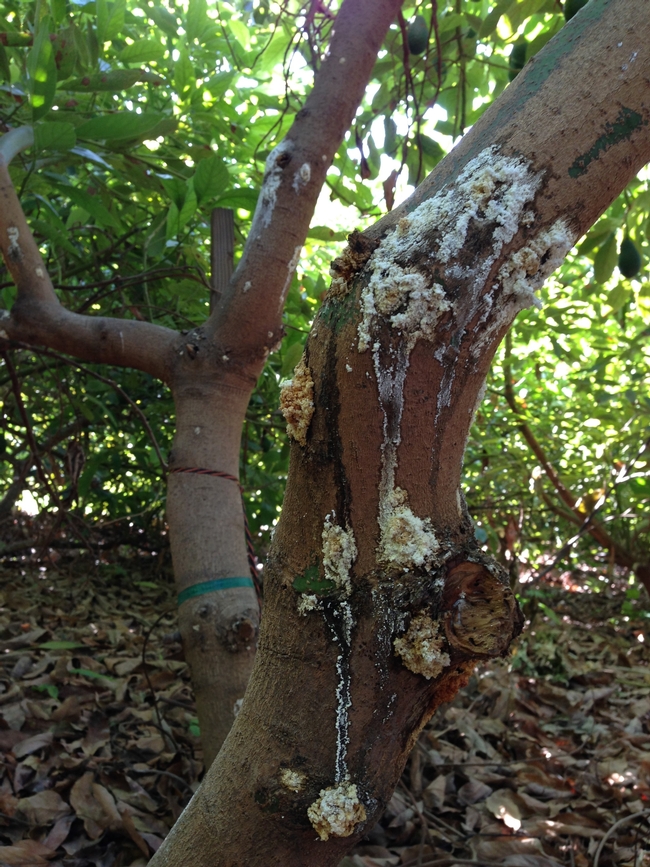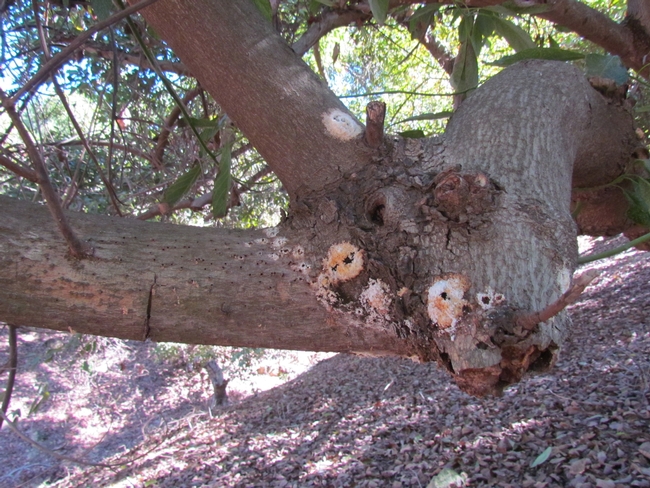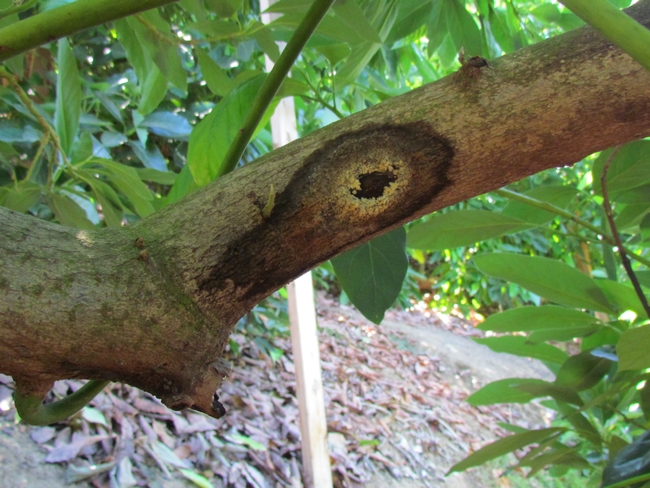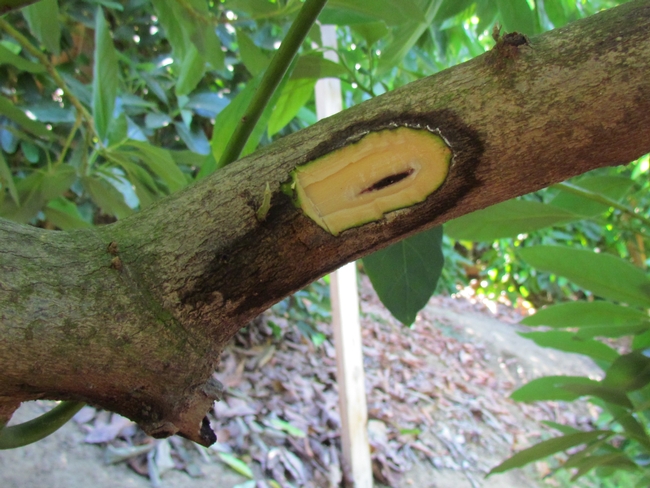The Polyphagous Shot Hole Borer (PSHB), Euwallacea sp. #1, is an invasive beetle that carries three fungi: Fusarium euwallaceae, Graphium sp. , and Acremonium sp. The adult female tunnels galleries into a wide variety of host trees, where it lays its eggs and grows the fungi. The fungi cause the Fusarium Dieback (FD) disease, which interrupts the transport of water and nutrients in over 35 tree species that are suitable for beetle reproduction.
Once the beetle/fungal complex has killed the host tree, pregnant females fly in search of a new host.
A separate invasion was recently detected in commercial avocado groves and landscape trees in San Diego county. It has been determined that the damage has been caused by another closely related species of PSHB (Euwallacea sp. #2), carrying a new species of Fusarium and Graphium. The beetle in LA, Orange, Riverside, and San Bernardino Counties are morphologically indistinguishable, but genetically distinct from the beetle found in San Diego County.
Signs and Symptoms
Attack symptoms, a host tree's visible response to stress, vary among host species. Staining, sugary exudate (B), gumming, and/or frass may be noticeable before the tiny beetles (females are typically 1.8-2.5 mm long). Beneath or near these symptoms, you may also see the beetle's entry/exit holes, which are ~0.85 mm in diameter. The abdomen of the female beetle can sometimes be seen sticking out of the hole.
Sugary exudate on trunks or branches may indicate a PSHB attack (photos A-E). Note that exudate may be washed off after rain events and therefore may not always be present on a
heavily infested branch.
Hosts
PSHB attacks hundreds of tree species, but it can only successfully lay its eggs and/or grow the fungi in certain hosts. These include: Avocado, Box elder, California sycamore, Coast live oak, White alder, Japanese maple, and Red willow. Visit eskalenlab.ucr.edu for the full list.
Fusarium dieback pathogens cause brown to black discoloration in infected wood. Scraping away bark over the entry/exit hole reveals dark staining around the gallery, and cross sections of cut branches show the extent of infection. Advanced infections eventually lead to branch dieback and death of the tree
How to report a suspect tree
Please report suspected tree infestations to UC Riverside (eskalenlab@gmail.com).
Submit the following information:
•Contact information (name, city, phone number, email)
•Suspect tree species
•Description of suspect tree's location (and/or GPS coordinates)
•Description of suspect tree's symptoms
•Photos of suspect tree and close-up photos of symptoms (see examples)
Take photos of suspect trees from several distances. Include photos of:
1. the trunk or symptomatic branches;
2. the symptoms (close-up); and
3. the entry/exit hole, if visible, with a ballpoint pen for scale (remove exudate if necessary). If dieback is observed, take a picture of the entire tree.
Attached Images:



